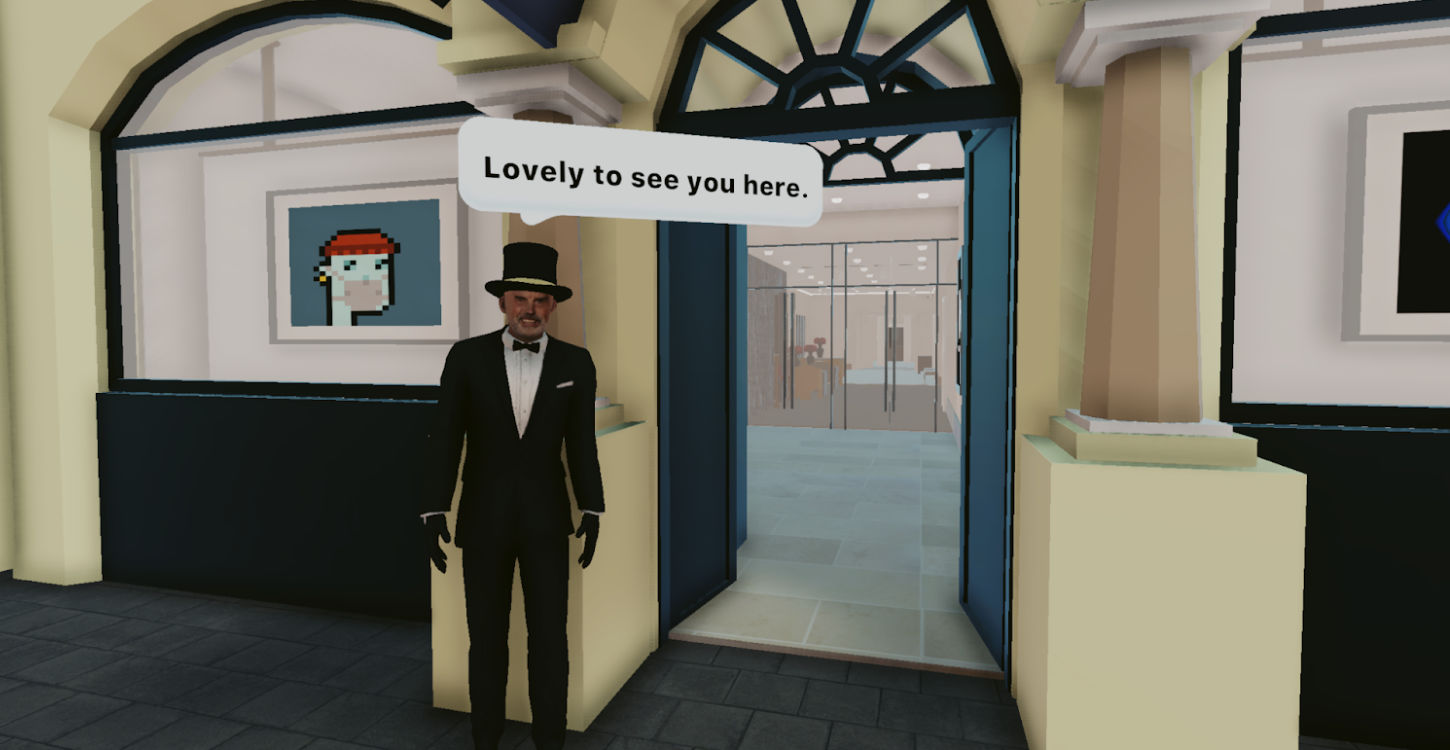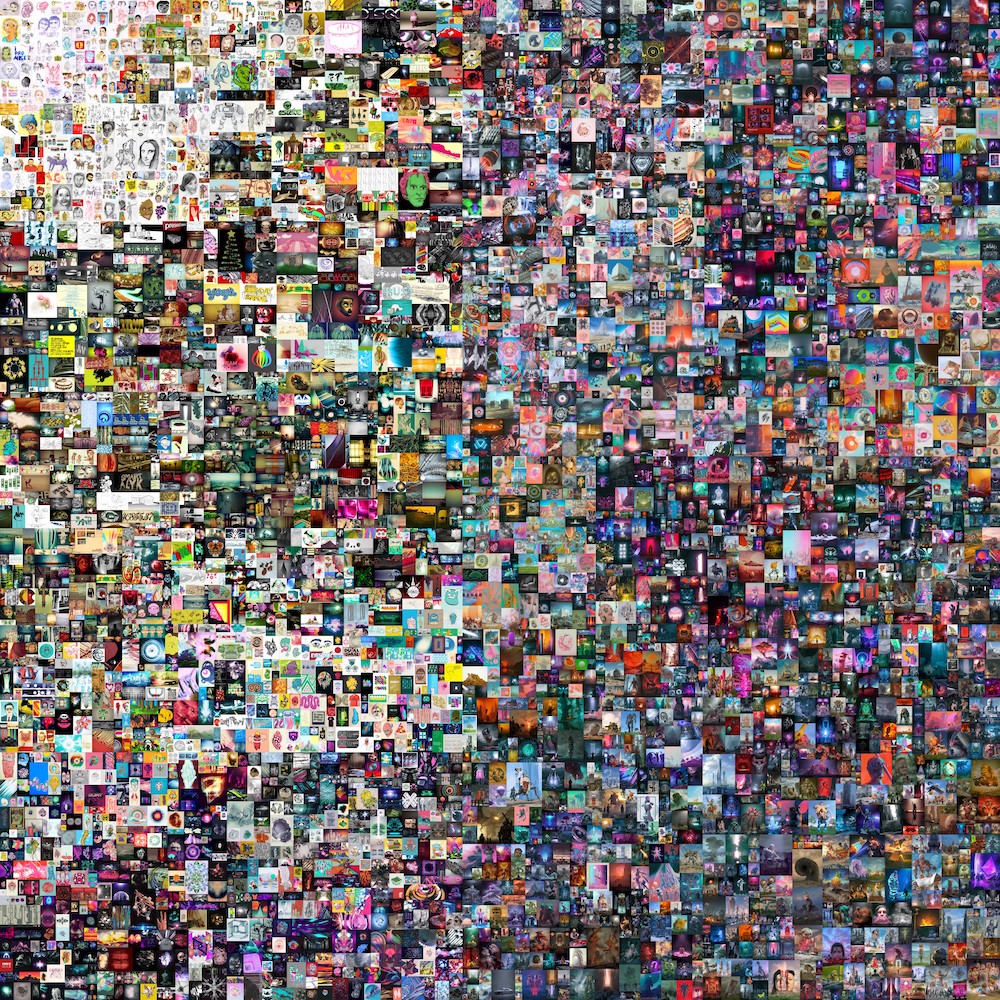What is an NFT? How do NFTs Work? All Your Questions About NFTs Answered
What is an NFT? That sounds like an innocent enough question, doesn’t it? However, the answer usually ends with the inquiring just wishing they hadn’t asked at all and the explainer drawing a deep breath as if to say, here we go again.
Today, we’re breaking down NFTs pixel by pixel - because, believe it or not, it’s time you start understanding what an NFT actually is and why some people are willing to spend millions of dollars on them. May we remind you that Nyan Cat - a pixelated GIF of a rainbow riding, pop-tart-bodied cat just sold for $696,378 (300 ETH) as an NFT?
We admit, it's pretty cute...
Nyan Cat [via GIPHY] GIF by Chris Torres. Sold for $696,378 (300 ETH) as an NFT on Foundation.
What does NFT stand for?
Non-Fungible Token
What is an NFT?
An NFT or Non-Fungible Token is a unique collectible digital asset. Inherit in its name (Non-Fungible) there can only be one original version just as there is only one original Mona Lisa.
An NFT acts as the digital signature backed by a peer-to-peer technology called the blockchain (we’ll go back to that in a minute). Since NFTs are traded by being bought and sold through NFT marketplaces, you can think of it as a digital record of ownership or a certificate of authenticity.
What can be made into an NFT?
- Artwork
- Virtual items within video games (ex. weapons, avatars, skins)
- Music
- Collectibles (ex. digital trading cards)
- Video footage
- GIFS
- Tokenized real-world assets (ex. real estate, cars)
- Virtual land
Still with us? Good! Before we go any further, we’re going to rewind to help you first understand the concept of blockchain technology.
What is a Blockchain?
Blockchains are, simply, a growing list of recorded transactions. Each “block” designates a transactional occurrence and contains an encrypted signature including a timestamp and transaction data.
Now, the most important aspect and key difference between the blockchain and classic systems of money moving is this: as the blocks (or digital records) are recorded in public, peer-to-peer ledgers (blockchains) they build on or occur one after the next, in a chain-like fashion. Imagine a diagram of a family tree. Information with blocks connecting to other branches of information in blocks. After the transaction is recorded on the blockchain there is no way to edit, alter or undo the record. Why? Because, through verification, the blockchain data is completely re-written to reflect the event which has just occurred - you can't just go back and erase crazy Aunt Rita from the family tree now, can ya? No, you can't. The point is, once a transaction exists on the blockchain it affects it permanently.
Furthermore, since blockchains run on decentralized computers, there is no single middle man or company manning the verifications of blockchain transactions - only the digital protocols put in place to cross-check, verify and record. This quality of decentralization is thought of as being highly secure and less hackable than current methods. It is only on the blockchain where transactions between people buying, selling or trading digital (crypto) currencies such as bitcoin or other digital assets such as - you guessed it - NFTs can take place.
Beeple, Everydays – The First 5000 Days NFT, 21,069 pixels x 21,069 pixels (316,939,910 bytes). Sold for $69M through Christie's and MakersPlace
What makes an NFT valuable?
Potential. The value shift occurring in the digital space is history in the making! Some people see NFTs as serious assets worth investing in, like fine art, while others seem more interested in bragging rights. At the moment, the value being placed on NFTs is really up for interpretation.
Want to be the sole-owner of Jack Dorsey’s first Tweet (sold for $2.9M on Valuables)? How about pocketing a legendary video clip of LeBron James nailing a slam dunk (sold for $200,000 on NBA Top Shot)? It would certainly make interesting cocktail conversation!
There's one industry, in particular, catapulting itself towards the crypto craze, and that's the art world. Although, NFTs have been around since 2014, they are increasingly becoming the most popular way to buy and sell digital artwork. A staggering $174 million has been spent on NFTs since November 2017. In March 2021, digital artist Mike Winklemann, also known as Beeple, offered his NFT collage titled, Everyday’s - The First 5000 Days which brought in an astounding $69M through Christie’s auction house on the platform MakersPlace. The sale made Beeple the creator of the most expensive NFT ever made and the third-most expensive living artist behind Jeff Koons and David Hockney.
It took Grimes, Canadian musician and partner to Elon Musk, less than 20 minutes to sell $5.8M worth of her NFT art on Nifty Gateway. Not at all surprising, contemporary artists are now jumping on the trend and opportunity to profit in these uncharted waters. Interest is so high that NFT collector, Tim Kang and hotel heiress, Paris Hilton have partnered up to offer cryptoart grants. Applying for a Sevens Genesis Grant enables artists to skip the fee of minting an artwork into an NFT so they can afford to enter into market. Their first open call attracted 700 applications within two days.

Hans Lomulder, Sotheby’s London Commissionaire, greeting virutal visitors in Decentraland. Image courtesy of decentraland.org
Expanding the metaverse even further is the opening of Sotheby’s first-ever virtual gallery. The digital destination is located in Decentraland’s Voltaire Art District and appears to be an exact replica of the auction house’s New Bond Street Galleries in London. Virtual guests are greeted at the door by Hans Lomulder, Sotheby’s London Commissionaire, and ushered through the galleries exhibiting NFT artworks. Folks, we may be witnessing the foundation and future of the digital art world being built, one blockchain brick at a time.
How are NFTs created?
Creating an NFT artwork isn’t as complicated as you think. The process is pretty straightforward and doesn’t require much of a background knowledge in cryptos. Whether it’s a GIF or an image, anyone can develop an NFT to be bought and sold - so long as you choose which blockchain you want to use.
Since Ethereum is the leading blockchain service for NFT issuance at the moment, we’ll stick to that for simplicity sake. Using Ethereum as your blockchain allows you to create and sell your NFT on the platforms which support Ethereum, such as the marketplace OpenSea. You simply sign up, connect your Ethereum-based wallet, upload your file and presto! - the NFT has been created. While it typically cost nothing to make NFTs on some platforms, others charge a fee. This is known as “gas.” Ethereum gas is the amount of ether required to perform a certain function on the blockchain - in this instance, adding a new NFT.
Are NFTs here to stay?
While the immense value being placed on certain NFTs has generated excitement - the longevity of the asset is up in the air. Since the value of an NFT is only worth what someone is willing to pay for it, the risk of investing can be high. If interest drops off, so does the value of your adorable flying cat GIF (not so cute anymore, is it?).
There are other issues inherit in the digital realm as well and it's as simple as a good ol'fashion copy and paste. The entire allure of NFTs claim that the owner of the digital signature (verified through the blockchain) is the only one with the "authentic" copy of a given asset. However, there's nothing stopping someone from clicking on a digital file, even after it's been minted and auctioned as an NFT, and simply creating a new copy. As a matter of fact, there are countless copies of digital artworks, video clips and GIFs all over the internet which can be reminted as NFTs and sold again. How can you be certain that the person selling an NFT is its original creator or authentic seller? Just recently, Monsieur Personne, a white hat hacker, has revealed this vulnerability when he successfully created a counterfeit version of Everyday’s - The First 5000 Days by Beeple to show how it could be re-listed on auction platforms and appear perfectly legitimate.
Can anything digital truly be an edition of one?
Then there's the energy issue. NFTs are so hot right now, they're actually starting to worry the climate community. Although, we'd like to believe that everything paperless is better for the environment - such is not the case with NFTs and cryptocurrencies. It takes tons of electronic energy to mine cryptocurrencies and "tokenize" an NFT for the blockchain. When you create a token on the Ethereum blockchain you essentially command computers to rev up and crank out the necessary calculations. According to a recent 2021 article in Time magazine, "...critics say the mining that makes them possible is perhaps humanity’s most direct way of making money by polluting the planet - Ethereum mining consumes about 26.5 terawatt-hours of electricity a year, nearly as much as the entire country of Ireland and its almost 5 million residents. In theory, all mining energy could come from renewable sources, but right now, there is money to be made by essentially converting cheap fossil fuels into valuable cryptocurrencies."
Yeah, it's not great.
However, the incentive to clean up NFTs and cryptocurrencies is already in the spotlight. Heavy hitters and crypto advocates like Elon Musk have demanded cleaner solutions of blockchain's like Bitcoin - if Tesla is to accept it as payment - and artists, like Beeple, know it's not a sustainable model. In a recent interview, Beeple has stated that all of his artwork will be carbon “neutral” or “negative,” because it will have the ability to completely offset emissions from his NFTs by investing in renewable energy, conservation projects, and/or technology that sucks CO2 out of the atmosphere. “I think you’re gonna see a lot of other artists do the same,” Beeple told The Verge.

Deal With It [Original Meme] by Ryder Ripps, Sold as an NFT for $29,082.90 (15 ETH) on Foundation
So, now that you have the knowledge to confidently clear your throat and explain NFTs at your next family barbecue - we invite you to both celebrate and question this digital phenomenon. Whether you decide to hop in and double dutch your way through the NFT market or sit back and watch the waves of headlines as they come in, just remember that we are all swimming in the same sea of speculation!
____________________________________
Don't have a Bidsquare account? Sign up here!
Be in the know about upcoming auctions and exciting post-sale results by following us on

Jessica Helen Weinberg | Senior Content Editor at Bidsquare
____________________________________
TIME, Digital NFT Art Is Booming—But at What Cost? By Alejandro de la Garza
The Verge, The Climate Controversey Swirling Around NFTs, By Justine Calma
- Preview the December Doyle+Design Auction: A Celebration of Modern & Contemporary Mastery
- Billings Winter Design 2025: A Celebration of Modern Mastery Across Eras
- The Ultimate Holiday Gift Guide: Luxe Finds From Bidsquare’s Finest Auctions
- Fine & Antique Jewelry Sale: A Curated Journey Through Craftsmanship & Design
- Upcoming Auction Spotlight: Doyle’s Fine Art: 19th Century & Early Modernism
- Entertain with Style This Holiday Season: Highlights from Doyle’s December 8 Auction
- Six Standout Lots from Newel’s Fine Jewelry, Timepieces & Luxury Handbags Sale
- Artist Spotlight: Roy Lichtenstein, Pop Art’s Master of Bold Lines & Bigger Ideas
- Discover the Warmth of Pennsylvania Impressionism: Nye & Co.’s Dec. 3 Auction Features the Collection of Nancy & Robert Stein
- Inspired by Cape Cod: The Artists Who Paint Its Light, History, and Character



 EUR
EUR CAD
CAD AUD
AUD GBP
GBP MXN
MXN HKD
HKD CNY
CNY MYR
MYR SEK
SEK SGD
SGD CHF
CHF THB
THB













